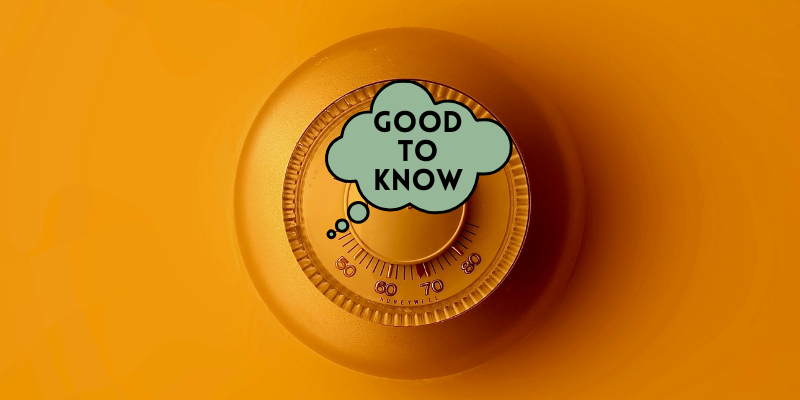
Donald Trump secured both the popular vote and a governing trifecta in the 2024 election. Trump and many commentators have framed the win as a clear mandate for his policy agenda. His campaign rhetoric on immigration, the economy, and other key issues resonated with millions of American voters, fueling expectations of sweeping changes in these areas.
Yet, setting aside debates about whether popular mandates are ever truly real, history reveals a striking irony: Public opinion often shifts against new governments – even when their policies seem to align with the preferences of the very citizens who voted them to power.
Indeed, this is one of the most enduring puzzles of democracy. Governments, no matter what they do, often seem unable to satisfy voters. When governments take action, the public often seems to want the opposite. Push policies left, and opinions shift right. Increase spending, and people want cuts.
That’s “thermostatic politics” in action
This phenomenon – where public preferences shift in the opposite direction of government action – is known as thermostatic politics.
The thermostatic model, first formalized by political scientist Christopher Wlezien in 1995, describes the public’s reaction to government policies as akin to a thermostat adjusting a room’s temperature. Just as a thermostat signals when to cool down or warm up based on current conditions, public opinion signals to policymakers when to increase or decrease policy activity.
But thermostatic politics isn’t just about the public reacting to policy – it’s also about democratic representation, or how policymakers respond to public opinion. Ideally, governments adjust their actions to reflect shifts in public preferences, creating a feedback loop. This two-way dynamic is central to the thermostatic model and a hallmark of healthy democratic systems, though it varies significantly by issue and political context.
The thermostatic model
Thermostatic politics is a powerful idea – and grounded in evidence that public opinion is not random or subjective. Instead, the thermostatic model reacts predictably to policy changes, while democratic governments react in turn to changes in public opinion. When a government increases welfare or defense spending, for example, the public tends to favor such spending less. Conversely, when welfare or defense budgets are cut, calls for increased spending grow louder.
Many studies show similar negative feedback beyond U.S. government spending, from racial and health care policies in the United States, to asylum policies and European unification issues abroad. This dynamic reflects democracy’s built-in feedback loop, where voters use their stated preferences to nudge policy – and the government more broadly – in their desired direction. And voters often succeed. For example, public opinion grew increasingly conservative during the relatively liberal Obama administration (2009-2017), illustrating how shifts in government action can provoke a corresponding pull toward the ideological opposite – and vice versa.
What makes thermostatic politics remarkable is that the public doesn’t need to have detailed knowledge of policies. Instead, voters rely on general perceptions – often shaped by media coverage – to evaluate whether the government is moving too far in one direction. In some cases, these responses can escalate into a full-scale public backlash. Such intense, widespread public opposition undermines the goals of a certain government policy change, essentially breaking the thermostat – well beyond a mere adjustment.
Not all stated public views are alike
How do we know what voters actually want? Most public opinion surveys capture what the polling experts call relative preferences: Do people want “more” or “less” of something relative to the status quo? These are the exact preferences that are most “thermostatic,” shifting in response to perceived policy changes. For example, if government spending on health care is rising, the public may demand less spending – even if their absolute preference for health care funding remains unchanged.
Absolute preferences, in contrast, represent people’s “ideal points” that change infrequently. A person might have a long-term belief that the government should stop all immigration of a certain kind, regardless of year-to-year fluctuations. These stable absolute benchmarks anchor public opinion, but are harder to measure directly.
The distinction matters because relative preferences dominate most polling data and reflect short-term adjustments. Policymakers, however, are left guessing whether these shifts indicate a change in normally deep ideological commitments – or a temporary reaction to policy overreach. The distinction between relative and absolute preferences also complicates public opinion comparisons.
To give one example, when Canadian voters now say that immigration in Canada should be “decreased” as their relative preference, this is clearly not the same as voters saying that immigration should be “decreased” in Japan, where actual immigration levels are at least ten times lower. Despite these observed differences in relative preferences, it is possible that voters’ absolute preference to have orderly, integrated, and economically beneficial immigration can be relatively similar across countries.
Thermostatic voting: policy changes vs. incumbent changes
Thermostatic back-and-forth adjustments also shape electoral politics as voters respond to both policy changes and partisan incumbents. This dynamic helps explain the consistent pattern of midterm losses for the president’s party in America. Voters tend to signal their dissatisfaction with perceived policy overreach, even if they broadly support the direction of specific policies. For instance, if a Democratic president increases welfare spending, public preferences may shift toward lower spending. This shift, in turn, leads to Republican gains in Congress – not because voters reject the idea of welfare expansion but as a way to recalibrate government policy toward the perceived center.
Even without significant policy shifts, the president’s party often faces losses due to the “cost of ruling.” However, policy changes that are highly visible or polarizing can amplify this effect. Voters use elections not only to judge policies but also to adjust the overall ideological trajectory of government, reflecting their desire for balance in governance. At the same, voters can also adjust their policy preferences to election results, such as in the case of immigration attitudes becoming more positive in response to electoral victories of right-wing parties in Europe.
Some issues are not (yet) thermostatic
Not all issues are thermostatic, in large part reflecting their low salience to voters. For thermostatic politics to function, the public must perceive both the issue and the government’s policy actions as important. High-salience issues like defense and health care often generate clear signals through media coverage, prompting the public to react. In contrast, topics like infrastructure or foreign aid frequently lack the same visibility. As a result, the public response to these issues at the polls may be more limited.
Institutions also shape whether issues become thermostatic. In federal systems like the United States, where multiple levels of government actually determine specific policies, public perceptions of responsibility often blur. Education policy, for example, involves federal, state, and local spending, making it harder for voters to connect specific outcomes to particular policymakers. In contrast, centralized systems tend to foster stronger feedback loops between public opinion and unitary government action.
Some issues, such as abortion or immigration, tend to resist thermostatic effects because these topics evoke fixed ideological commitments rather than flexible preferences for “more” or “less.” Similarly, equality issues – such as women’s or gay rights – often follow long-term cultural shifts, not short-term partisan dynamics. Public opinion steadily trends in one direction over time due to generational replacement and changing societal norms.
But other issues are becoming more thermostatic
Even so, some traditionally polarized issues like immigration have become more thermostatic in recent years. U.S. public opinion on immigration, long trending positive, began showing stronger thermostatic dynamics as salience increased and reliance on White House executive actions over legislation became more prominent.
During the Trump administration, many who felt U.S. immigration policy was too restrictive voiced concerns, leading to a sharp rise in positive sentiment toward immigration. Under the Biden administration, the pattern reversed. Some voters who previously felt immigration policies were too restrictive no longer saw reason for concern, while others began to feel U.S. policies were too open.
These trends also suggest that – barring drastic developments – public opinion will likely swing back under the new Trump term, as more Americans start to push back against tighter immigration policies in 2025 and beyond. These shifts reflect normal thermostatic reactions: Public opinion adjusts not only to policy changes but also to who is in power and their perceived approach to governance, even when policy changes themselves remain under debate and underlying absolute preferences do not change.
Why thermostatic politics matters
Thermostatic politics offers a powerful yet nuanced way to understand democratic accountability. This model shows that public dissatisfaction is not necessarily a sign of failure, but is an essential feature of democratic governance. However, this process also highlights the challenges of democracy. Polarization and fragmented media environments can distort the signals that underpin thermostatic dynamics, reducing their effectiveness. Similarly, policymakers must navigate the tension between short-term reactions and long-term goals, knowing that public opinion may evolve as policies take effect.
Ultimately, thermostatic politics underscores the resilience of the United States and other modern democracies. While governments may struggle to fully satisfy public opinion, the public’s role as a thermostat ensures that power remains responsive to collective preferences – both relative and absolute. By understanding and anticipating these dynamics, policymakers can better balance immediate demands with enduring societal goals.
Related Good Authority posts:
- Alexander Kustov, “Good to Know: Public backlash,” from May 6, 2024, discussing the impact of strong public reaction to people, political decisions, and more.
- Alexander Kustov, “What does Trump’s second term mean for immigration?” from November 13, 2024, as key appointments were announced in the incoming Trump administration.
- John Sides, “The public is a thermostat,” from June 2010, discussing the concept of thermostatic politics.
- John Sides, “Will a smaller deficit make the public love government more?” from July 2011, as the Obama administration grappled with Americans’ views of the economy and the U.S. government.
- John Sides, “How government spending moves public opinion: It depends on redistribution,” from February 2013, discussing the increasingly conservative public outlook as Obama administration policies and programs aimed to reduce inequality.
Further reading and resources:
- Christopher Wlezien, “The public as thermostat: Dynamics of preferences for spending,” American Journal of Political Science, November 1995, pp. 981-1000.
- Stuart N. Soroka and Christopher Wlezien, Degrees of Democracy: Politics, Public Opinion, and Policy (Cambridge University Press, 2009).
- Mary Layton Atkinson, K. Elizabeth Coggins, James A. Stimson, and Frank R. Baumgartner, The Dynamics of Public Opinion (Cambridge University Press, 2021).
- James Dennison and Alexander Kustov, “The Reverse Backlash: How the Success of Populist Radical Right Parties Relates to More Positive Immigration Attitudes,” Public Opinion Quarterly, Winter 2023, pp. 1013-1024.
- Matt Grossmann and Christopher Wlezien, “A Thermostatic Model of Congressional Elections” American Politics Research, vol. 52, issue 4 (2024), pp. 355-366.
- “How Does the Public Move Right When Policy Moves Left?” February 2022 podcast, Niskanen Center.
- “What is thermostatic politics?” December 2021 podcast, Politics in Question.
- “The public may not be getting the policies they want, but it’s very hard to measure what they do want,” LSE blog discussion on April 24, 2017, of a 2016 article by Christopher Wlezien.
Alex Kustov is a 2024-2025 Good Authority fellow.




